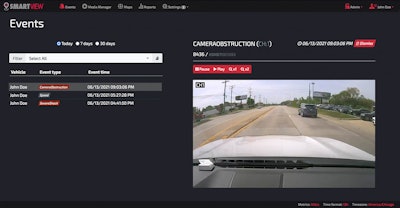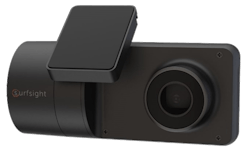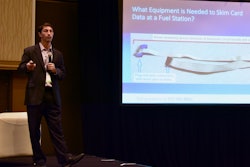
After a long day on the road, the last thing any driver wants is to be falsely accused of risky driving by a fleet manager who’s leaning on telematics backed by murky artificial intelligence.
Conversely, fleet managers, according to SmartWitness Vice President of Products Michael Bloom, don’t want to be saddled with a touchy telematics system that incorrectly flags their drivers and puts them in a dicey man versus machine moment that could lead to higher turnover.
It’s a problem that Bloom said led SmartWitness to develop a more refined AI system dubbed Artificial Intelligence Driving Events (AIDE) that can more clearly distinguish between a credible driving event that requires intervention and one that doesn’t.
Take, for instance, a cutthroat onramp in a bustling metro. Quick acceleration often needed to merge with traffic can come back to bite the driver.
 According to SmartWitness, their Artificial Intelligence Driving Events (AIDE) software can discern between a pothole and a collision.SmartWitness
According to SmartWitness, their Artificial Intelligence Driving Events (AIDE) software can discern between a pothole and a collision.SmartWitness
Drivers may also get dinged on harsh braking in heavy traffic where other drivers can get squirrely and suddenly pull in front of their truck during a hasty lane change. Roads through hills and mountains may also require additional braking that can lead to more unwarranted driver alerts and videos for fleet managers to review.
“As a fleet manager, do I really want to sit and have to watch all of those videos? No, I don't want to do that,” Bloom said. “Number two, I'm not going to do that because I'm going to look at the first video and I'm going to see that it's not truly a harsh braking event that I need to be concerned about and then I'm going to lose faith in the efficacy of the product.”
More discerning AI
Distrust in a monitoring system can lead to non-use and the possibility of missing out on actual event that requires intervention, Bloom said. Cloud-based AIDE aims to build event credibility by more closely analyzing the traits of individual drivers within a real-world context where traffic happens and putting the pedal to the metal and hard braking is sometimes a necessity.“What our product does is filter out the non-events,” Bloom said. “There are literally thousands of different types of scenarios that we look at and filter out.”
[Related: Lytx and HD Fleet unveil portable video event data recorder]
The secret sauce in their algorithms is paying off.
“What we saw in terms of efficacy in our beta testing was for about 150,000 events we saw a 10X reduction [in false positives],” Bloom said. “And because there's machine learning in the backend, what happens is the product starts to learn specifically in relation to a driver and understand what their normal driving patterns are.”
AIDE can be incorporated in existing telematics systems and doesn’t require AI-enabled cameras. Bloom recommends that fleets take two approaches to cameras: equip some trucks with only road-facing cameras and others with both road and driver-facing cameras.
He said he’s seen greater acceptance of driver-facing cameras, particularly among drivers who have been exonerated of wrongdoing thanks to additional video evidence that driver-facing cameras provide.
Workhound CEO and co-founder Max Farrell, whose company regularly gauges driver preferences through anonymous feedback, said it’s important to involve drivers when considering driver-facing cameras.
“They are generally very repelled by the idea and see it as a violation of trust and privacy,” said Farrell who’ll soon be offering a trends report on the topic. “Several do threaten to leave because companies announce implementing driver-facing cameras, or have had a bad incident involving a camera.
“Our recommendation for companies pushing forward on these initiatives is to make sure to share the ‘why’ behind any new technology decision,” Farrell continued. “They need to coach how it helps the driver be safer and make more money.”













